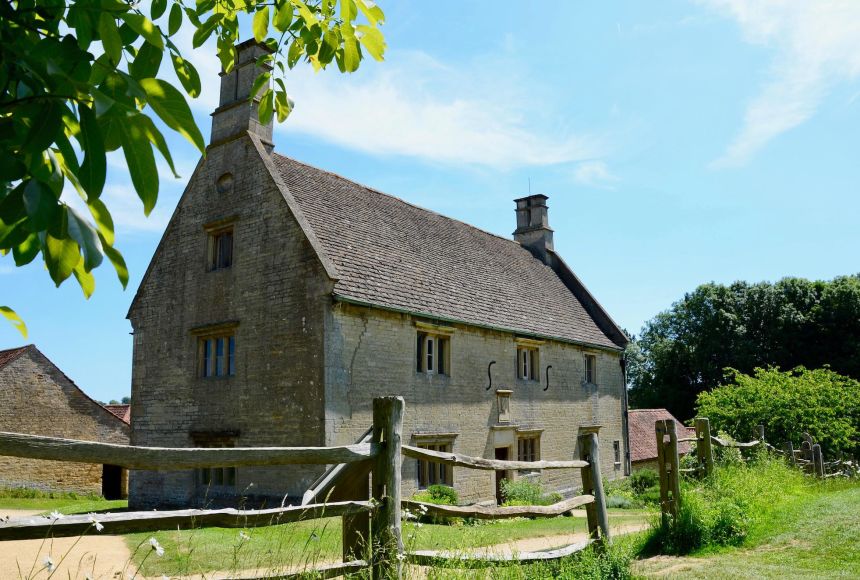A falling apple prompts physicist Isaac Newton to formulate his laws of gravity. Greek polymath Archimedes takes a bath and figures out how to calculate volume and density. These are iconic “light bulb” moments in the history of science. Or, as Archimedes reputedly said when insight struck, Eureka!
Today, the flash of insight is measurable using brain scans, which show a part of the right hemisphere lights up at that moment. While Anna Marie Roos, a historian of science at the University of Lincoln, in Lincoln, England, advises us to take some “eureka moments” with a grain of salt, she thinks they do have much to say about the creative process.
The following conversation with Roos took place at Newton’s birthplace, Woolsthorpe Manor in Lincolnshire, England, near the apple tree said to have inspired his theory of gravitation, and in London, England.
The story of Newton and the falling apple is recorded in an 18th-century manuscript in the Royal Society in London. It was written by William Stukeley, his friend and first biographer, who quotes Newton as saying his thinking on the nature of gravity “was occasion'd by the fall of an apple, as he sat in contemplative mood.” Doesn’t that validate the story?
Stukeley wasn’t told the story by Newton in Lincolnshire, England, where the tree is. It was 1726, in London, and Newton was no longer the young genius trying to get on. Newton is telling the story as an old man to a young disciple. By then, he was “The Great Man,” the statesman of science gathering his acolytes around him.
They are having tea under apple trees in Newton's garden in Kensington, so they get to talking, and Newton says, Well, you know I first saw the idea of gravity sitting under the apple tree when I was a young man in Woolsthorpe [a village in Lincolnshire]. I can imagine Stukeley, who was intelligent but also very naïve, saying to Newton: Oh, really?
So then the story was embellished—the apple didn’t just fall; it fell on Newton’s head. What gives the tale such long legs?
First of all, Stukeley's Memoirs of Newton is one of the few sources we have about his early life. Another reason there was an agenda to promote the story was that Newton had been involved in a dispute with the philosopher-mathematician [Gottfried Wilhelm] Leibniz over the discovery of calculus. Leibniz published first, but Newton thought of it earlier. So, what could be better than coming up with the idea he was a wunderkind? It’s a nice visual story about inspiration. People remember it, tell it, and it gets better with the retelling.
Keith Moore, the Royal Society’s librarian, wryly describes the apple story as “an 18th-century sound bite.” Is it fair to accuse Newton of being a spin-doctor, or worse, lying?
I don’t think Newton is lying. I think he really did have an insight. I think you could look at it as a core of truth. But I do not think the apple went plonk on his head. It would have concussed him.
Let’s consider another famous eureka moment—the Greek mathematician Archimedes and the story of how he solved a problem for the king of Syracuse by taking a bath.
King Herio II had commissioned a new royal crown, for which he provided the gold. When the crown arrived, the king, suspicious the goldsmith had substituted silver for some of the gold and kept it for himself, asked Archimedes to determine if the crown was pure gold without harming it. How was he going to do this? He lowered himself into the bath and suddenly realized he could measure the crown’s volume by the amount of water displaced and solve the problem. He got out of the tub shouting Eureka! and streaked across Syracuse, the tale goes.
Did he understand volume and specific gravity? Probably so. Did he streak across Syracuse? Probably not. Also, most of what we know about Archimedes was written well after he was dead.
Point taken. So narratives of scientific discovery, like any other, get polished after the fact. But let’s talk about what these eureka moments do say about the scientific process and creativity?
Well, both stories about Newton and Archimedes speak to the need to quiet the mind and be contemplative. Also, the putting together of disparate things—a falling apple and gravity, an overflowing bathtub and specific gravity. It tells us that creativity needs space to thrive. Also, many scientists get creative ideas when they let themselves play.
For example?
Alexander Fleming [the biologist who serendipitously discovered penicillin] loved games. When you grow bacteria on plates, they have different colors and shapes. He would paint pictures on the agar using different colors [of bacteria]—a picture of a ballerina for example. You have to know the basics of your field well in order to relax them a little to see what happens.
There’s a dreamy quality to this.
Actor John Cleese likens creativity to a tortoise. There’s an idea. The tortoise gently comes out of its shell, looks around, and if you say, Oh, that’s stupid. I don’t have time, back it goes. But if you give it space for contemplative thinking and you give it the time, it grows.
In other words, you could say the eureka story is a scientific haiku …
It’s the essence of an idea. It doesn’t give you any sense of the steps or preparatory stuff, but people love them because it simplifies things and takes away all the hard slogging. It's an analogy everybody understands. Eureka stories are a compression of decades and decades of work into one inspirational moment. It's like a parable.
